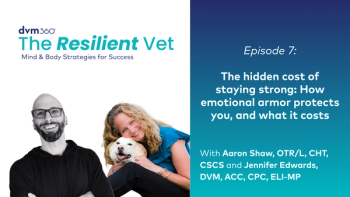
Cages, Stress, and Upper Respiratory Infection in Shelter Cats
In a new study, researchers from UC Davis concluded that by making modifications to housing, shelters can reduce the rates of URI among their cats.
An estimated
One of the leading disease concerns in shelters—and 1 of the most commonly reported types of illness—is feline upper respiratory infection (URI), which has incidence rates as high as 30%. Because of its prevalence and notoriety to spread quickly among cats, URI is also believed to be one the common reasons for
RELATED:
- Managing Cats with Upper Respiratory Infection
- Feline URI: Not If, But When
With the understanding that URI could be linked to stress, and that shelter animals are prone to increased levels of stress, researchers from the University of California, Davis conducted a study to assess whether modifications could be made in animal shelters that would impact URI rates. Based on their findings, which were recently published in
Methodology
In a study funded by Morris Animal Foundation, investigators partnered with 9 animal shelters across North America and collected data from August 1, 2008 through July 31, 2009. Each enrolled animal shelter had an on-site veterinarian and a defined set of criteria for URI recognition.
Shelter staff were responsible for recording daily data about their feline populations, such as how many of the cats in their care had a URI and how long those cats had been at the shelter. Staff also completed surveys that provided information about cage size, hide boxes, disinfection practices, and vaccinations.
To determine the monthly URI rate, the total number of new URI cases was divided by the total number of days at risk for URI. If a cat was diagnosed with URI at the time of surrender or within 2 days of arrival, it was considered to be a pre-existing case and was therefore excluded from the calculation. Over the course of the study, 18,373 adult cats were included, with 210,987 days at risk and 31,924 URI days recorded.
Correlation Between Shelter Space and URI Rates
Upon analyzing the data, the researchers determined that to minimize stress and cases of URI, cats required about 8 square feet of floor space in their cages. This is double the 4 square feet that researchers found to be the average in the participating shelters. The researchers did point out, however, that there are limited studies on optimal single cat housing size for cats in confinement, and suggest that it would be helpful for future studies to clarify the minimum size required to see a beneficial effect.
Cats that were moved between cages less than 2 times in the first week of arrival were also less likely to contract URI compared with cats that experienced more frequent movement. The authors attributed this to stress levels associated with frequent changes in housing.
Cats also got sick less frequently at shelters that provided them with double-compartment cages that allowed each cat to remain comfortably on one side of the cage while the other side was being cleaned. These cages also provided the ideal separation of the litterbox from food, water, and bedding, which the researchers concluded may have further contributed to lower stress levels.
“Our study demonstrated that a disease we thought was almost inevitable in shelters is absolutely preventable, and prevention could be as simple as just giving the cat enough space,” Kate Hurley, DVM, study author and director of the UC Davis Koret Shelter Medicine Program, said. “The benefits go far beyond just preventing URI. By making these changes, shelters can make cats happier, lower staff stress by making their jobs easier, and increase adoptions and shelter success in saving lives.”
Dr. Hurley and her team are using the information from this study to assist interested shelters in making adequate changes to their cage configurations for cats. Although there is an initial cost associated with remodeling existing cages, Dr. Hurley explained that in the long-term, the animal shelters would likely end up saving a significant money on providing medical care for sick cats.
“Shelters can take immediate practical action based on the results of this study,” added Kelly Diehl, DVM, DACVIM, senior scientific programs and communications adviser at Morris Animal Foundation. “These changes can improve cats’ well-being and ultimately save lives—important goals for both shelters and Morris Animal Foundation.”
Newsletter
From exam room tips to practice management insights, get trusted veterinary news delivered straight to your inbox—subscribe to dvm360.




